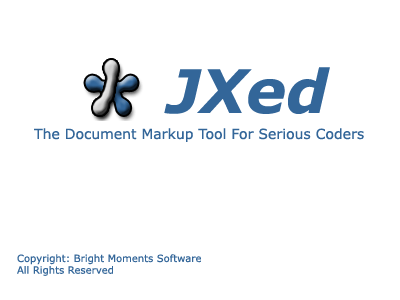

Hardware
Minimum Configuration
Software
Mac Users:
Install Apple's version of Java. You can get that at: http://support.apple.com/kb/DL1572. Installing this version of Java will not affect other Java installations. It will merely enable apps looking for Java in its usual place to find it.
Windows and Linux
Install Java SE Runtime Environment 7 available at: http://www.oracle.com/technetwork/java/javase/downloads/java-archive-downloads-javase7-521261.html. Note: You should uninstall Java 8 if it is already installed prior to installing Java 7.
If you have a Java SE 7 JRE installed on your system and JXEd fails to start, try using the --javahome switch from the command line:
From a command prompt, navigate to the JXEd install/bin folder and type:
JXEd --javahome path_to_JRE
Installing JXEd
Unzip JXEd.zip to a clean directory
Starting JXEd
Navigate to the bin directory of your install directory and execute the application appropriate for your operating system
Stopping JXEd
Choose Exit from the File menu
Uninstalling JXEd
Delete the files in your install directory
Finding Documentation for JXEd
This version of JXEd is based on the open source Netbeans project. You can find information about Netbeans at the following URLs:
JXEd's User Directory
A default user directory is created the first time you start the IDE. It is
used to store your user settings, options and runtime data for personal development
servers. On Microsoft
Windows systems, this directory is found at \Documents
and Settings\user-id\.JXEd.
On Solaris and Linux, this directory is found at
/$HOME/.JXEd